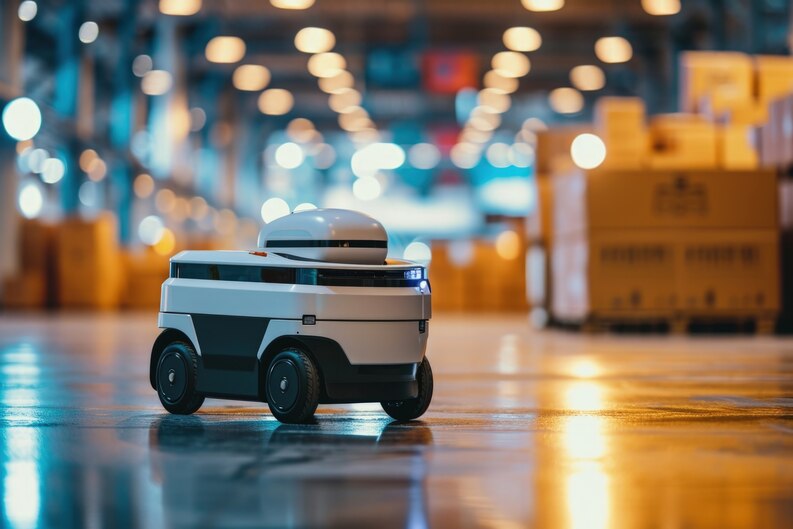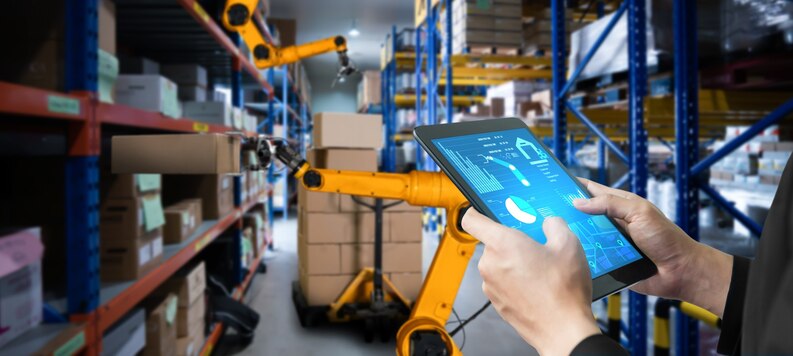There are a lot of things in common between robotics and wrestling. For both sides, flexibility and reach are of paramount importance. In addition, there are a number of categories based on weight and payload capacity for robots and wrestlers.
The sumo wrestler in robotics world is a heavy paycheck robot. These machines possess a large work envelope, which makes them suitable for arduous loads.
Today, a large number of manufacturers are making an investment in massive six-axis robots to take on responsibilities that were formerly handled through forklifts, hoists, lift-assist devices, overhead cranes and different kinds of material managing equipment.
Big robots are particularly famous with producers of solid and forged metal parts. They’re additionally appealing to corporations that want to transport automotive floor pans, vehicle bodies, rear-axle assemblies, big family appliances, tractors or different bulky objects, including sections of airplanes, railcars and ships.
Allied Market Research predicts that demand for terrific heavy payload robots will develop by four percent yearly between now and 2025. Those types of machines are at the center of in particular attraction to automobile producers for application in body shops, foundries, and engine or transmission assembly lines.
An excellent example would be Ford Motor Company’s assembly plant in Michigan. It uses a heavy-duty six-axis machine that employees affectionately dubbed “Godzilla.” The giant robot, at the automobile store, is a system for car transfers. They pick up corpses from pallets and put them on an elevator that takes them out of the paint shop.
The requirement of traditional lift and transfer systems that use mechanical tool changers was replaced by the robot. This has led to a decrease in floor space of more than 40 % for the 2012 Assembly Plant of the Year. By eliminating a large number of hard tools, it also reduced the complexity of the system. Prior to that, forklifts and more flexible material handling machines were used in the transfer process.
The need for traditional lifting and transfer equipment, which uses mechanical tools, was eliminated by the robot. This led to a reduction in the floor area by more than 40 percent at the 2012 Assembly Plant of the Year. In addition, it removed a major amount of hard tooling to reduce the complexity of the system. In the past, the transfer process required the use of forklifts and other nonflexible material handling devices.
Flexible Automation
Robots are increasingly used by manufacturers to pick up bigger and heavier parts. Compared to the fixed monuments of the past, flexible automation is becoming more attractive. .
The FANUC America Corp. Executive Director of Global Accounts Chris Blanchette said, “SUPER HEAVY PACKERS replace custom applications that are usually constructed for only one specific purpose.” One example is the use of elevators that moved whole vehicles from a factory floor to an overhead lift in automotive assembly plants.
“Six-axis robots have the flexibility to handle new tasks in the future without having to redesign a machine or reconfigure valuable floor space,” explains Blanchette. “Today’s generation of robots also cost less to integrate into assembly lines.”
Blanchette says that the logistical and warehouse industries are attracted to high weight robots for their ability to pick up large pallets and bulk containers of liquid or powder. In addition, bigger robots to carry out tasks like the relocation of large loads of bricks, marble blocks, precast stone panels or steel beams are being increasingly favoured by the construction industry.
“We also see a lot of demand from the aviation sector,” Blanchette said. Aircraft manufacturers have relied on powerful, heavy machinery for assembly applications such as drilling or Riveting. It is because of their great reach capacity and ability to work easily around huge sections that big robots attract them. A giant robot with a wide working envelope can take over assembly of the entire fuselage section.’
FANUC classifies its R-2000iC and M-900iB families as heavy payload robots, because they can typically handle anything from 200 to 700 kilograms. However, its super heavyweight M-2000iA robot family is the strongest on the market. It can handle payloads up to 2,300 kilograms and boasts a reach of more than 4,600 millimeters.
The Mobility payload robots from Yaskawa America’s MotomanHigh Robotics Division provide the flexibility to material handling applications which have traditionally been carried out by lower technology conveyor systems, or with a high degree of manual handling,” explains Dean Elkins, segment manager for materials handling.
There are plenty of things that can be done without human intervention with heavier cargo robots, and they make it easier to move the parts through a variety of processes,” Elkins tells us. “The term ‘heavy weight’ is often reserved for robots capable of regularly manipulating loads, including an end effector weighing more than 200 kg.”
Kawasaki Robotics USA Inc. classifies “heavy” as robots with payload capacities higher than 300 kilograms.
One of the main reasons that the heavy equipment industry is looking for heavy payload machines is the flexibility offered by robots compared to hard automation,” says Samir Patel, Director of Product and Applications Engineering at Kawasaki Robotics. Robots undergo rigorous development and testing, which means that they are more reliable than robots with fixed automation.
The fact that it is more important than ever for the industries like aerospace, oil & gas and power generation to deal with very large payloads when unconventional applications come into play also explains the increasing demand for heavier duty robots,” Patel says.
‘Heavy’ Defined
Is bigger better? As far as robots are concerned, it depends on the application and the way in which you define terms such as big heavy or heavy.”
Comau LLC defines “heavy payload” as robots similar to its new NJ-650 2.7, which boasts a capacity of 650 kilograms and a reach of up to 3 meters. The strongest machine in Motoman is the 900 MH900 robot, capable of handling a kilogram’s load with 4.6 m vertical reach.
The industry was beginning to see electronic machines capable of lifting up to 150 kilograms as the norm 10 or 15 years ago,” Elkins says. “Several years ago, the heavy-payload class had a starting point that averaged between 100 and 150 kilograms.
‘In fact, some early heavy load robots have been hydraulically operated,” Elkins recalls. In fact, the advent of servomotors and electric motors with greater output capacities such as torque has changed this. Collaborating it with more robust gear reduction systems led to the development of robots which could lift and manipulate heavier loads, in excess of 600 kg.
A heavy load robot is something that has to be capable of handling applications weighing over 350 kg, according to Josh Williamson, ABB Robotics Global Product Manager. He points out that this term is relative, and there’ll be plenty of debate about what they consider to be a heavy load.
Over the years we have seen a lot of changes to what is meant as an enormous cargo,” says Williamson. In 1991, our IRB 6000 droid weighed around 2,000 kg and could carry up to 200 kg. That’s a ten to one ratio. It was deemed to be a heavy weight robot.
According to Williamson, ABB made the release of IRB 7600 in 2001. That was the original six axis robot with a capacity of 500 kilograms, and this is still considered to be an important cargo in today’s world. Fifteen years ago, most people in our industry considered anything over 250 kg to be heavy cargo. Today’s IRB 8700 weighs 4,525 kilograms and is equipped with an ultimate end of “arm” weight of 800 kg,” Williamson says. That’s a bit higher than the 6 to 1 ratio. High load Pay Robots are getting more lean and stronger.
It doesn’t matter to most of the six axis robots what their payload capacity is, they look and act the same way. Big robots are typically scaled up designs of smaller machines that share similar operating characteristics as their little brothers
These heavy cargo carriers are equipped with more powerful gears and larger capacity engines,” says Williamson. They’re also using thicker castings that can withstand the forces generated by the extreme mass of the load, which is multiplied by motion, including rapid acceleration and deceleration, in particular in the event of an emergency stop.’
The engineering employed in the design of casting is slightly different from that used for robots less than this size,” says Eric Potter, Head of Engineering at FANUC’s General Industrial and Automotive Applications Division. You’d like to optimize casting strength while minimizing the robot weight when you have more payload robots. These changes in the casting design allow the user of the end of the robot arm, which is not used internally due to the increased weight of the castings, to have an additional load.
Reducing motor weight is a further aspect of the savings in weight,” Potter says. “Software innovations make it possible to synchronize motors on a single axis, with the aim of maximizing their efficiency while reducing the space needed.”
With our six axis robots, programming and user interaction tend to be as similar as any of them,” Potter says. “We can’t distinguish between devices with different payload capacities in terms of user interface experience.” The programming interface on the teach pendant is the same for our super heavy payload M-2000 all the way down to our little LR Mates that handle light loads. It allows a user of FANUC robots to move quickly from our light payload robots to their heavy payloads.
High payload robots, of course, usually weigh more and are not as fast as small six axis machines. ‘There’s a fine line between how much you can carry and how fast you can take it,’ Potter says. The area of the floor loading unit is also more extensive with heavier, payload robots. Therefore, due account should be taken of the anchoring and foundation requirements.
One of the biggest challenges for super large cargo robots is that you must put a special foundation on it,” Blanchette says. To resolve the issue of anchoring, our M-2000 series is equipped with a weighted load distribution at its base. Because of that, there is no need to be a thicker floor foundation.
In conclusion, robots have proven to be highly effective in handling heavy loads. They offer numerous benefits over manual labor, including increased efficiency, accuracy, and safety. As technology continues to improve, it is likely that we will see even more advanced robots designed specifically for heavy lifting tasks in the future. Overall, the use of robots for handling heavy loads has had a significant impact on industries that rely on this type of work, enabling them to operate more efficiently and with greater safety.
Resources:
https://www.assemblymag.com/articles/95181-robots-for-handling-heavy-loads




